THE INTEGRATION OF THE HIRATA ZONES WITH THE ONTAKE METHOD
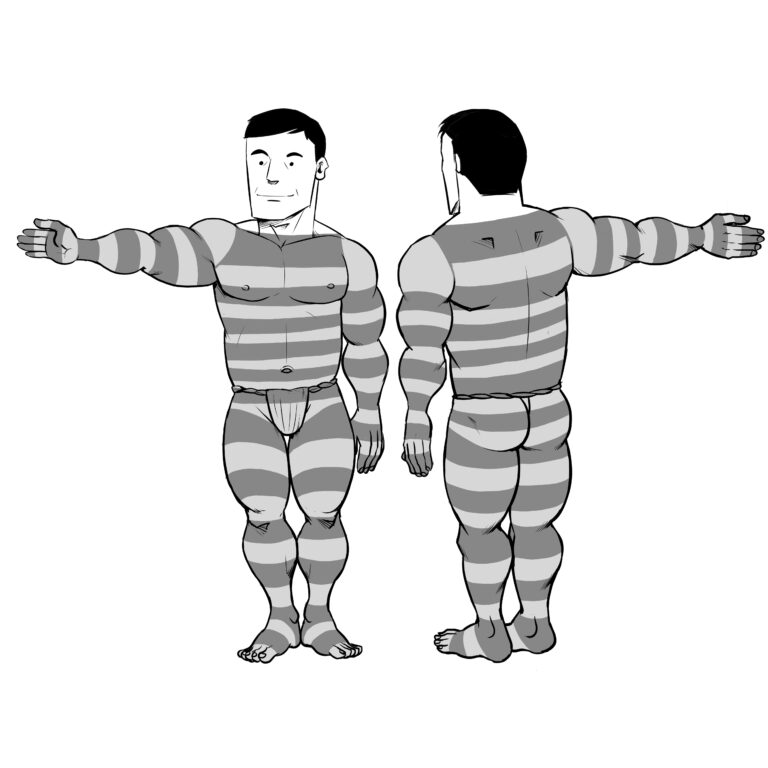
Kurakichi Hirata 平田内蔵吉
Hot Needle Therapy (Nesshin Kairyo Jutsu) was a Japanese holographic system of treatment. It was developed by Kurakichi Hirata (1901–1945), who developed a unique holographic mapping system of the body that he treated with a heated probe.
Hirata’s holographic mappings predate Nogier’s microsystem of the ear and all the holographic systems that have come since. Hirata should therefore be seen as a pioneer in the field of acupuncture, creating the first holographic mapping of the modern era.
Dissatisfied with conventional medicine, Hirata wanted to develop an accessible system of self-treatment. He designed a system that was simple for the public to learn and apply by using a heated tool that, unlike acupuncture needles, required little skill to use. He wrote several books, developing his treatment model to a high level, integrating it with ideas from TEAM. Sadly, this young prodigy died during the Second World War.
Hirata’s general ideas on health are quite familiar to practitioners of TEAM. He believed that when the organs are harmonised and balanced, there is no disease. When something becomes imbalanced at the core level, disease develops. It is therefore more important to treat the core than address specific symptoms.
Hirata’s model of disease was strongly influenced by the TEAM idea of “Heaven, Humanity and Earth”. He saw the skin as the interface between human beings and the natural world—the place where disease enters and where reactions take place. For this reason, Hirata emphasised diagnosing and treating at the level of the skin, and his method focused on stimulating the skin with heat.
He developed a hologram composed of twelve horizontal dermatomes (or zones). These twelve zones are mapped out in six different regions, namely, the head, face, neck, torso, arms, and legs. Zones in each region resonate with and reflect the same zone in another region.
THE TWELVE ZONES
There are twelve zones, which for the most part, correspond to the twelve yin and yang organs of TEAM theory. However, as Hirata’s model was medicalised, at least at the beginning, there are no correspondences for triple burner or pericardium. Instead, there are new correspondences at the very top and bottom of the hologram for the bronchi and the reproductive organs. The gall bladder zone and spleen zone also reflect and treat the exocrine and endocrine functions of the pancreas, respectively.
1. Bronchi |
2. Lungs |
3. Heart |
4. Liver |
5. Gall bladder and exocrine gland of the pancreas |
6. Spleen and endocrine gland of the pancreas |
7. Stomach |
8. Kidney |
9. Large intestine |
10. Small intestine |
11. Bladder |
12. Reproductive organs |
Each region is a hologram of the body, and therefore, each region reflects the same physiological and pathological processes in the same way. For example, Hirata believed that an imbalance in the liver organ manifests in reactions on the liver zone in each region.
This synergistic action means that the same twelve zones can be examined or treated in any or all of the six regions; thus, the head, face, neck, arms, legs, and torso can be used both diagnostically and therapeutically.
THE ARM AND LEG REGIONS
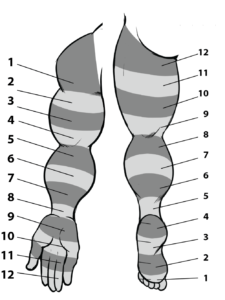
Rather than have the zones as an abstraction, let’s start by exploring two regions, the arm and the leg. The zones of the arm form a holographic image, numbered from 1–12, from the top of the shoulder to the tips of the fingers. The twelve zones can be grouped simply into four on the upper arm, four on the forearm, and four on the hand. A little bit like the back-shu points, the arm reflects its anatomical neighbours, with the upper jiao zones in the upper part of the arm, the middle jiao zones in the middle section, and the lower jiao points in the hand. Take thirty seconds out from reading this article to divide your upper arm, forearm and hand each into four segments each. Try counting down from 1–12.
The leg region is similar to the arm region, in that it is divided into four zones in each segment. However, it is a reverse mirror of the arm, in that zone 1 is at the fingers and zone 12 is at the thigh. Try counting the zones up from 1–12.
The torso region repeats the pattern of the arm, with the twelve zones flowing from top to bottom in the same order. The twelve zones also repeat on the head, face, and neck, but in these regions, as on the leg, they count from the bottom up.
Yoshio Manaka 間中喜雄
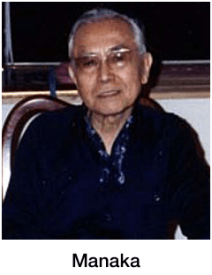
One of the most influential practitioners to investigate and take up Hirata’s ideas was the renowned Japanese medical doctor and acupuncturist, Dr Yoshio Manaka (1911–1989).
Dr Manaka combined scientific research skills with a fascination for traditional methods of healing. He studied Hirata’s books, and enthusiastically adapted his methods, eventually publishing his own book about them in 1982, Hiratashiki Junihannotai Nesshin Shigeki Ryoho (Hirata’s Heated Needle Stimulation Treatment).
Stephen Birch
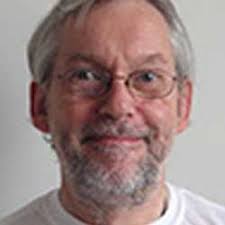
British acupuncturist, author, and teacher, Stephen Birch, became acquainted with Dr Manaka in the 1980s. This international collaboration led to the publication of Chasing the Dragon’s Tail, written by Birch with Manaka’s input and guidance. It was a seminal book on acupuncture and acupuncture research, and contained some of the first explanations of Hirata Zone Therapy (HZT) in English.
Birch became a conduit for Japanese acupuncture thinking and ideas, teaching Manaka-Style Acupuncture (MSA) globally. However, when teaching, his classes did not cover HZT in any detail. We can guess that the reasons for this were pragmatic.
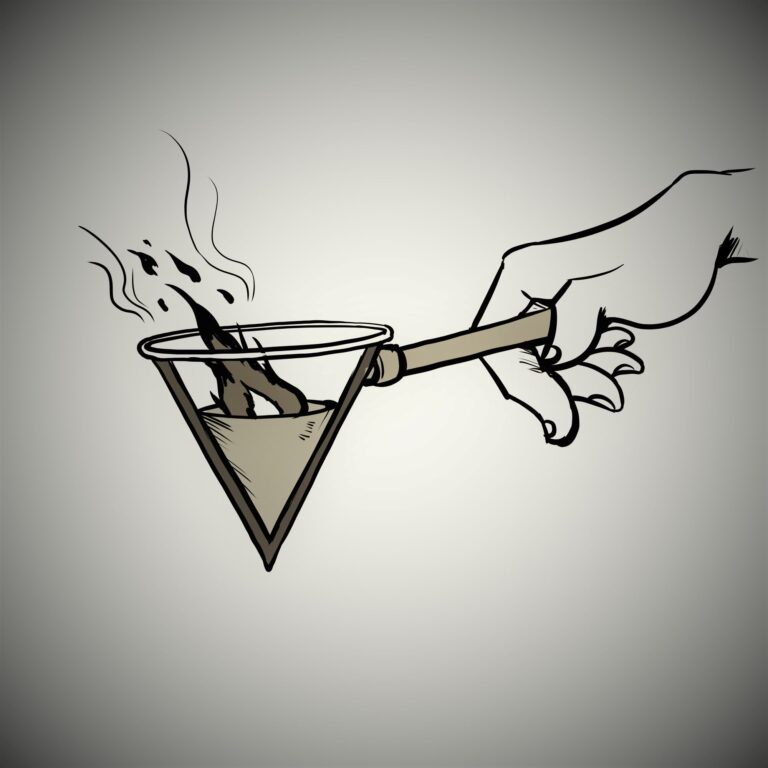
In the old days, HZT involved stimulating the zones with a cone-shaped metal instrument lined with asbestos and filled with burning ethyl alcohol, called the shinryoki or Mind Therapy Device. Few of these remain in existence now, and they would be considered unsafe to use for many reasons.
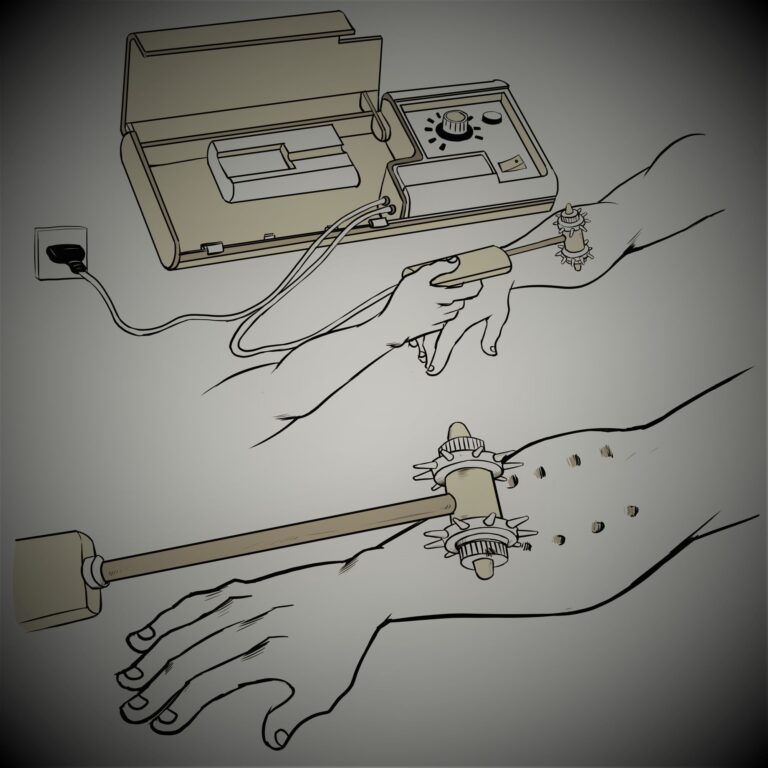
Manaka developed an electrically heated blunt probe called the tenshin kyu (spiked moxibustion device), but this was not mass-produced and once again, few of these remain in existence. Contemporary Hirata practitioners use a more sophisticated electronic hot probe called the hirata-kun but its retail price puts it out of the range of most acupuncturists.
Thus, we can conclude that HZT never really caught on in the West because there was no safe or affordable device available to deliver the heat. Teaching HZT would have been an academic pursuit with no practical application. Acupuncture students are nothing if not pragmatic—if there’s no application, there’s no value!
Ontake to the Rescue
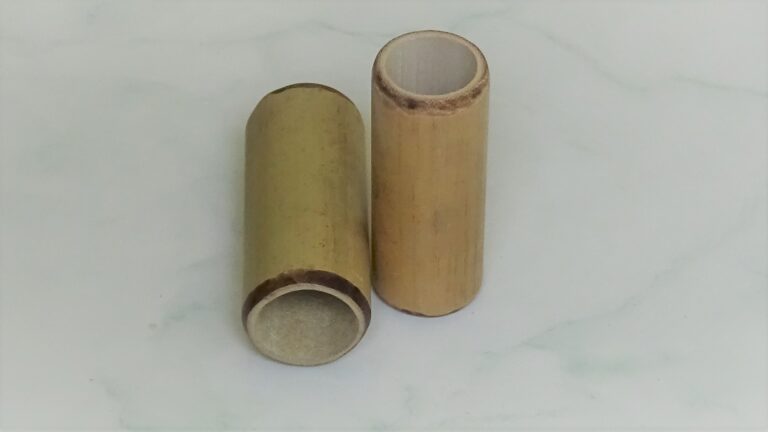
In 2010, I was introduced to Ontake, a little-known moxibustion tool. Ontake is comprised of a short piece of bamboo filled with moxa wool. When the moxa is ignited, the bamboo gets hot and can be applied to the skin. The bamboo can be held, tapped, pressed or rolled rhythmically along the acupuncture channels and on specific points.
After reading my first paper on Ontake in 2011, Birch immediately saw its potential, encouraging me to experiment with it to see if it could be applied to the Hirata zones.

HZT is a unique system of dermatome moxibustion that has almost been lost. Birch’s suggestion that I should study HZT and integrate it with Ontake became a mission—a mission to discover how Hirata worked, how Manaka redeveloped his findings, and how almost ninety years later, we can achieve the maximum benefit from these ideas. The mission ended up as a book, aiming to place the system into a pragmatic modern context so that Western practitioners and their patients can easily learn and apply it.
BASIC HIRATA
The model for treatment in HZT has developed over time. When Hirata first started it, it was a relatively simple model, what I call Basic HZT, which used only the zones for treatment. By the time of Hirata’s death, the model was more complex, integrating the twelve channels of acupuncture, although Hirata declined to call them that, naming them instead, “reactive lines”. He gave each of these twelve reactive lines a number, calling the yin channels kussen “flexion lines”, and the yang channels shinsen “extension lines”.
Manaka further refined this integration of the channel system, what I call Intermediate HZT. Today, contemporary practitioners such as Taku Yokoyama in Japan, who studied with Manaka, or members of the Kokusai Nihon Onnetsu Ryoho Kenkyukai, (International Japanese Thermotherapy Association), practise what I call Complex HZT, integrating many other ideas into the HZT model.
In this article, I’ll discuss only Basic HZT. Basic HZT is so simple, anyone can practise it, even laypeople who know nothing of acupuncture. No meridians are involved, so all you need to perform Basic Hirata is the following:
- A good grasp of the location of the zones in all six regions, especially the neck, torso, arms, and legs.
- An understanding of how to load, light, and apply Ontake.
CASES TREATED WITH THE BASIC HIRATA METHOD
Male, 32
Symptoms: Persistent cough and occasional lower backache.
Generally quite healthy and robust, this patient had developed a “mystery” intermittent cough that he was unable to shake. On questioning, however, the timing suggested that the yearly cycle of air pollution in Kuala Lumpur was to blame.
He had also developed some intermittent lumbar pain. Hirata’s prescriptions for cough typically focus on zone 1 (bronchi). According to the location of the back pain, the affected zones were 9 and 10 (large and small intestine). Palpation revealed marked tension on the leg region at zones 9 and 10 (mostly on the stomach channel above the knee), and a few slightly rough patches of skin on the chest and arms at zones 1 and 2 (bronchi and lung).
Treatment consisted of tapping with Ontake on the deficient areas on the chest and upper arms on zones 1 and 2 until the skin felt more even, then rubbing, pressing, superknocking (a brisk percussive stroke with the side of the warm bamboo), and rolling on the thighs until the tension on zones 9 and 10 was relieved. After he turned over, we tapped on the upper back, identifying and treating more dry or rough areas in zones 1 and 2.
No other treatment was given. Following the session, he reported that some stiffness in the back of his legs and knee pain, which he had not previously disclosed, felt much better. This maintained. The cough also cleared for a few days, but when the pollution got even worse at the end of that week, it returned.
Female, 30
Symptoms: Lumbar and buttock pain, and abdominal distension.
She had been coming for back pain for a few weeks and had been feeling much better, but she had a relapse after a long flight home from an international conference. According to the location of the back pain, the affected zones were 9, 10, and 11 (large intestine, small intestine and bladder). According to TEAM theory, abdominal distension relates to zones 6 and 7(spleen and stomach).
There was marked tension on both anterior thighs at zones 10 and 11. Bamboo was applied with pressing and rolling on the right. After the muscles released (within two minutes), her left leg was also much more relaxed, so this was treated the same way for a shorter time. After this, she walked around the room and reported that the pain was much reduced. Zones 10 and 11 were then rolled on the back of both hands. After testing once more, the pain was gone.
Whilst in supine position, bamboo was applied on zones 6–10 on the abdomen from the midline to the midaxillary line, tapping and rolling lightly. Branch treatment finished with local rolling on the back. By then, she was very relaxed.
The session concluded with very light Toyohari-style acupuncture root treatment.
Male, 32
Symptoms: Sudden onset of redness and itchiness to the right eye, which was beginning to close up.
Zone selection was according to TEAM theory, namely that the liver opens into the eyes. Ontake was applied to zone 4 (liver) on the head, arm, back, and leg regions, simply tapping each zone for about one minute until the skin felt warm to the touch. On the limbs, only the right side was treated but on the head and back, both sides were treated. The eye infection reduced in intensity within minutes and cleared up within two hours.
COMMENT
These examples show how it is possible to use Basic HZT with very simple selection and treatment criteria. If there’s a problem in the lungs such as cough, treat the lung zone. If there’s a problem in the back, treat the zones where the pain is. If there’s a problem in the eyes, treat the liver zone because of the relationship of the liver to the eyes. Western medical correlations, anatomical location, TEAM theory, and of course, palpation all helped with the choice of zones, and bamboo was applied without thought to treating affected channels.
OBSERVATIONS FROM MY OWN PRACTICE
I have found that HZT brings extra healing momentum to what I normally do. Thus, if I treat the kidney channel with meridian therapy methods, I can add Ontake on the kidney zone in different regions as an adjunctive treatment. If I treat with MSA, perhaps choosing a Mixed Yin pattern, I can accelerate the release of tight areas on the abdomen by tapping the liver and kidney zones. Whatever system of root treatment I apply, I can focus on the digestion by tapping on the spleen and stomach zones, or improve lung function by tapping on zones 1 and 2.
Palpation is another useful area for HZT. Palpation of the zones of the arm and leg regions always conveys a wealth of diagnostic information. For example, if there are shoulder, upper back or heart and lung channel issues, zones 1 and 2 on the arm will often present with tightness or induration.
As zones 8 and 9 cover the lumbar region and zones 10 and 11 traverse the sacrum, the anterior thigh is a rich area to pick up information about what is happening in the lower back. Tension above SP-10 and ST-34, at the intersection of zones 9 and 10, is nearly always indicative of lumbar stiffness or pain.
CONCLUSIONS
Basic HZT is an elementary treatment model that can easily be integrated into your everyday workflow or adapted for home use by patients.
More sophisticated models of treatment integrate the channel system, and channel pairings, as well as Dr Manaka’s meridian frequencies, tapping the zones with Ontake using a metronome set to specific frequencies of beats per minute.
Deeper study of HZT, integrating its concepts with channel theory and other treatment models, reveals its great potential.
Hirata’s original goal was to create a people’s medicine that treated the core energy of the body. In so doing, he created the first holographic system of acupuncture in the modern age. His influence has declined over time but now, with the integration of Ontake, we can find new uses for his ideas in contemporary practice. All you need is a lighted Ontake and you can start!
Palpation is another useful area for HZT. Palpation of the zones of the arm and leg regions always conveys a wealth of diagnostic information. For example, if there are shoulder, upper back or heart and lung channel issues, zones 1 and 2 on the arm will often present with tightness or induration.
As zones 8 and 9 cover the lumbar region and zones 10 and 11 traverse the sacrum, the anterior thigh is a rich area to pick up information about what is happening in the lower back. Tension above SP-10 and ST-34, at the intersection of zones 9 and 10, is nearly always indicative of lumbar stiffness or pain.
IN A NUTSHELL
- In the 1930s, Hirata developed a twelve-zone holographic system of dermatome moxibustion.
- The twelve zones repeat over six regions: the head, face, neck, torso, arms, and legs.
- In the 1980s, Manaka researched and developed this system further, integrating it into MSA.
- Birch wrote about this in the West, but as no tool was available to treat the zones with heat, the method did not catch on.
- Ontake started to become better known in 2010 as a new tool that could deliver heat safely, thus enabling it to be adapted to treat the Hirata zones.
- The zones can be used to add a new level of palpatory awareness.
- HZT can be used as a standalone treatment or integrated into your standard workflow.
My new book about the Hirata zones is launching on January 24th. Would you like to help out? Check out the post about joining the launch team or just click the button below to know more
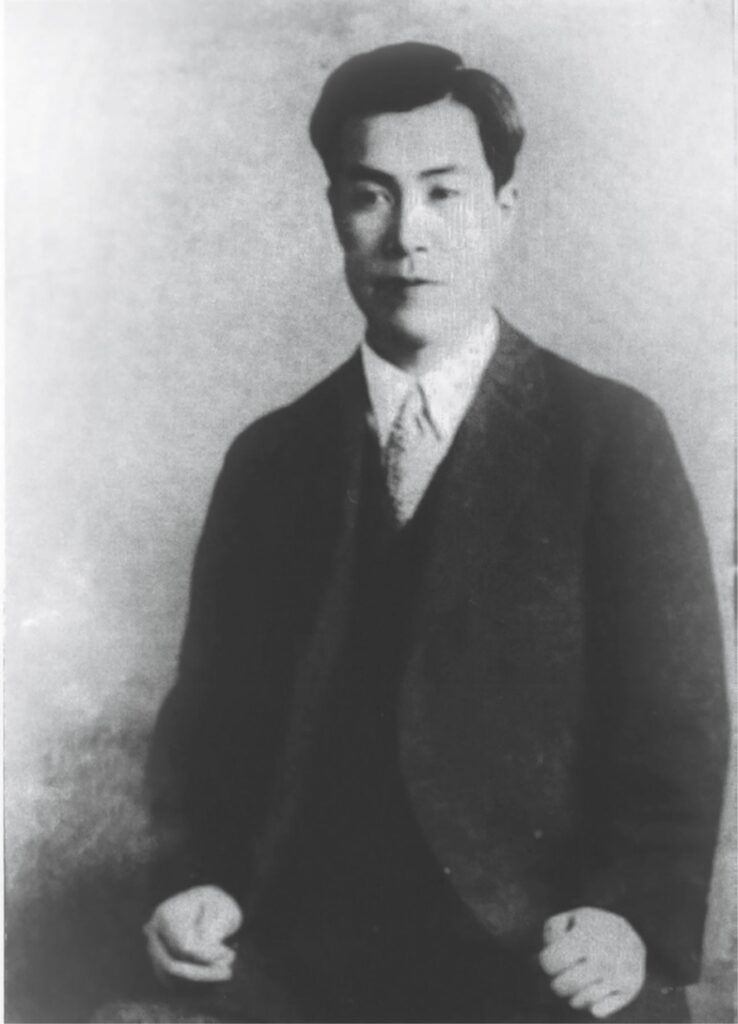
Excelent ideal. It’s another great possibility to magnify our treatments. I thought you were going to use the six lines for those treatments and it was a surprise that we can treat the specific zones.
Let’s practice!
👍 merci beaucoup